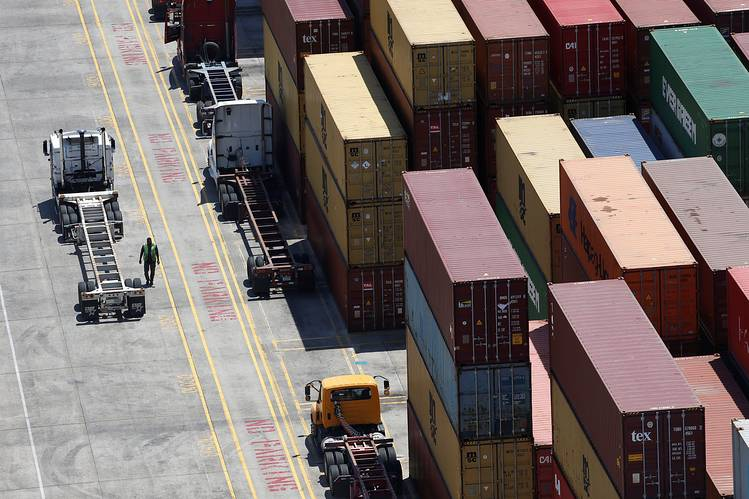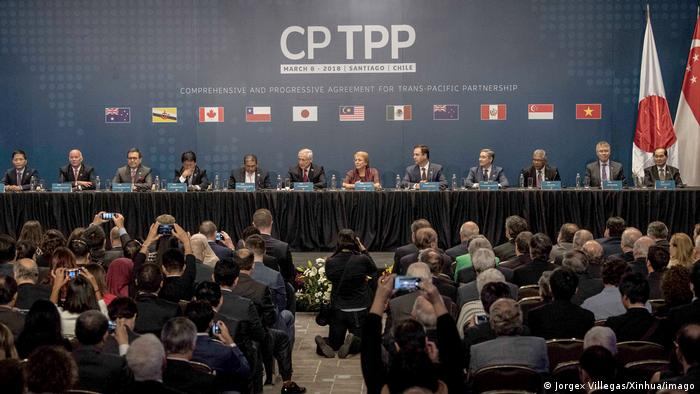Widgetized Section
Go to Admin » Appearance » Widgets » and move Gabfire Widget: Social into that MastheadOverlay zone
China applies to join the CPTPP Beijing is facing stiff opposition
China said on the September 16th it had formally applied to join the Comprehensive and Progressive Trans-Pacific Partnership (CPTPP), underlining the international trade ambitions of the world’s second-largest economy. However, analysts say Beijing will face a number of headwinds, including the pain of needed domestic reforms.
The deal’s predecessor was the Trans-Pacific Partnership. Pushed by former U.S. President Barack Obama as a counterweight to China’s influence, the pact has high barriers to trade liberalization. But his successor, President Donald Trump, withdrew from the agreement in 2017.
China’s Commerce Ministry said in a statement that Minister Wang Wentao submitted a written letter to Damien O’Connor, New Zealand’s minister for Trade and Export Growth, applying to join the CPTPP. New Zealand is the depositary of the 1129339-m2tu5a1R-nation agreement and handles various administrative matters such as requests for accession.
The Chinese and New Zealand ministers also held a telephone conference to discuss the follow-up work of China’s formal application for accession, according to a press release on the website of China’s Ministry of Commerce.
China had been lobbying countries to include it in the pact. Beijing has stressed that the Chinese and Australian economies have great potential for cooperation, even though relations between the two countries have deteriorated rapidly in recent years.
Japan led negotiations to restructure the CPTPP after the US announced its withdrawal in 2017. Eleven countries, including Australia, Canada, Chile, Japan, Mexico and New Zealand, signed the CPTPP in Santiago, Chile, in 2018.
Before the Biden administration took office, Chinese President Xi Jinping said for the first time in November that China would actively consider joining the CPTPP. In February, Vice Commerce Minister Wang Shouwen said he had done “internal work” on assessing the CPTPP terms and had informal contacts with some member countries.
The UK formally launched negotiations to join the CPTPP in June, while Thailand has also expressed interest in joining the pact.
The CPTPP, the predecessor of the Trans-Pacific Partnership, was built around the US and pushed by the Obama era, with some provisions tailored to the US. The whole deal is also seen as a counterweight to China’s economic rise.
Wendy Cutler, vice president of the Asia Society Policy Institute and a former top U.S. trade negotiator, told the Wall Street Journal: “This highlights how both the United States and China are actively courting partners and seeking to join existing alliances or create new ones to advance their interests.”
Joining the CPTPP would be a huge boost for China, especially since it signed another free trade agreement with 14 countries last year, the Regional Comprehensive Economic Partnership (RCEP).
The RCEP, which includes the ten ASEAN countries as well as the Republic of Korea, China, Japan, Australia and New Zealand, will become the world’s largest free trade economic system, surpassing the Eu free Trade Area.
Analysts believe that although the CPTPP is not as large as RCEP, it has lower tariffs and higher trade freedom than RCEP. It also covers Countries in the Americas such as Canada and Peru, which can enhance the breadth and depth of China’s participation in leading economic cooperation in the Asia-Pacific region. In addition, when CPTPP takes effect and zero tariffs are implemented among member countries, if China is excluded, it may directly affect the competitiveness of Chinese products in the Asia-Pacific market.
Su Qingyi of The Chinese Academy of Social Sciences once analyzed in an economic commentary that under different scenarios, China’s joining the CPTPP would boost GDP growth by 0.74% to 2.27% and export growth by 4.69% to 10.25%.

Peter Petri and Michael Plummer, fellows at the Peterson Institute for International Economics Plummer’s 2019 study also showed that China would lose $10 billion in revenue from the trade-shifting effects of the CPTPP if it did not join, while it would gain $298 billion if it joined.
Gao Lingyun, a researcher at the Institute of World Economics and Politics of the Chinese Academy of Social Sciences, told the state-run Global Times that the APPLICATION to join the CPTPP was a major step forward in China’s participation in making international economic and trade agreements, and that it would push the country “to be in a better position” to decide future trade rules.
He added that the agreement also contributes to existing domestic efforts to deepen reform and opening up, especially in easing trade and investment controls.
However, China’s path to joining the CPTPP will also be fraught with difficulties, and analysts remain doubtful about China’s eventual success. As the world’s highest-standard free trade agreement, the CPTPP is riddled with rules on labor issues, environmental protection and dispute resolution, meaning Beijing must make domestic reforms to reach the threshold and negotiate for a long time.
In addition, CPTPP has clear provisions on cross-border data transmission, requiring all parties to allow “cross-border information transmission through electronic means” for the purpose of conducting business and forbidding the requirement of “data localization”. That is clearly at odds with China’s data security law, which took effect this month and severely restricts companies from taking data out of the country.
The CPTPP also called for an end to discrimination against domestic and foreign companies in government procurement, but Reuters reported in August that The Chinese government issued new procurement guidelines in May requiring 100 percent localization of hundreds of items, including X-ray machines and magnetic resonance imaging equipment, placing new obstacles in the way of foreign suppliers.
Even some Chinese scholars are not optimistic about the disparity. In an analysis written this month by Peng Lei, a scholar at the Institute of Economics at the Chinese Academy of Social Sciences, he highlighted the gap between the openness of China’s services sector and the CPTPP requirements, with “high levels of market access restrictions in certain sectors, such as telecommunications and radio and television”.
In addition, China is very cautious about the movement of natural persons (temporary entry of business personnel), and its openness is generally lower than that of other developing countries.
In addition to institutional and rules-based issues, observers believe pressure from the United States and its Allies, as well as other geopolitical issues, will be another important factor preventing Beijing from joining.
Under rules, all 11 members must agree for China to join the CPTPP, but it comes amid deteriorating relations with Australia and a territorial dispute with Vietnam, another member.
On September 16th America, Britain and Australia suddenly announced a new security pact under which defence co-operation in the Indo-Pacific region will be greatly enhanced. Australia will acquire “the capability to build nuclear submarines” with the help of the US and UK. It comes after a period in which Sino-Australian relations have plunged to a deep freeze over Allegations of Infiltration into China and calls for an independent investigation into the source of the coronavirus.


